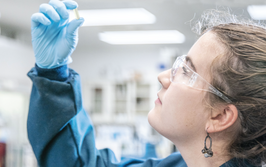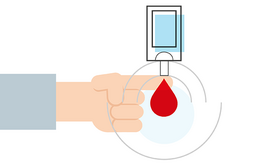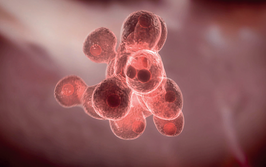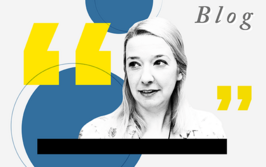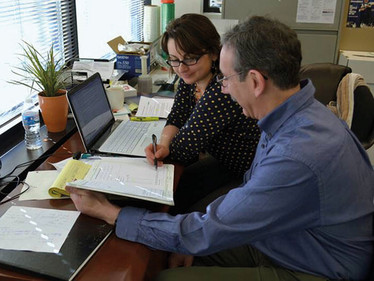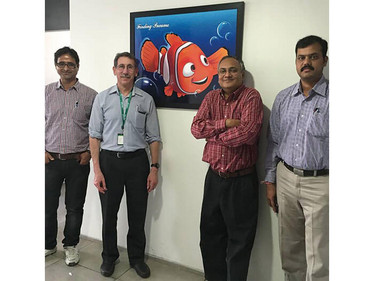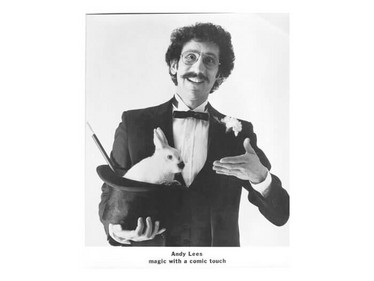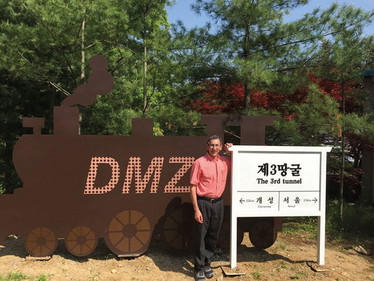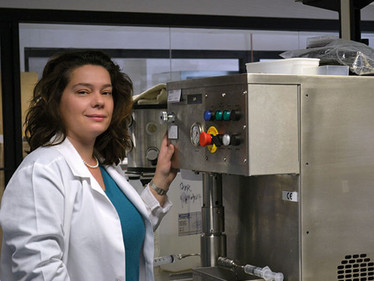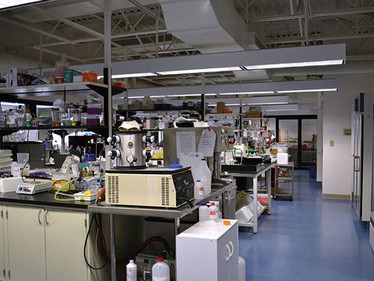
The Conjuror of Conjugation: Lessons Learned with Andrew Lees
Andrew Lees lightheartedly states that he has built his career on two tenets: multivalency and being lazy. And it’s worked out well; while moonlighting as a magician, he has developed the conjugation chemistry behind some of the world's most-used vaccines. Here, he explains how he learned to combine science and magic.
A scientific career is not straightforward
I grew up surrounded by science. My mother was a neurochemist. She was the first woman to attend Harvard’s graduate biochemistry department and later became President of the American Neurochemistry Society and editor of their journal. She was a wonderful mentor – both to me and many students. My father started out at the Massachusetts Institute of Technology developing gyroscopes for guided missiles, but ended up doing pioneering research into the structure of teeth and bone. Our house in Boston was always full of visiting scientists and there were times when I had future Nobel Prize-winners babysitting me.
In that environment, a science career seemed inevitable for me and my brothers. My older brother walked a conventional path from PhD to industry and my younger brother ended up in finance, but I became a little lost as I advanced in my academic career. I was my high school valedictorian and I went on to read engineering at Harvey Mudd College in Claremont, California, but after one class I realized that I’d made a mistake – engineering was too rigid and it didn’t fit my personality. Chemistry seemed interesting so I switched. However, after getting my degree I didn’t know what to do – so I ended up going to graduate school, an effective way of deferring decisions! Larger institutions intimidated me, so I chose John Hopkins University, which had a small biophysics department.
Some scientists need an outlet
When you’re in grad school, options start to open up and you have to take a good look at yourself and start to make decisions about your life. Obtaining a PhD can be as much about psychological pressure as it is about actual research. Indeed, I think grad school is psychologically difficult for many students and I don’t think everyone gets the help they need. For me, part of the problem was that I was suffering from the perceived expectations I felt from my parents. I was also absolutely terrified of giving scientific talks.
I needed an escape route. I’d always been interested in magic tricks so I reverted back to the hobby. It was strange that I couldn’t present my work in front of 10 colleagues, but I didn’t have a problem performing in front of hundreds as a magician. I loved it and I started a street-performing troupe in Baltimore called the Freelance Fools. Next, I began performing for private parties, and then I started working at a restaurant doing table magic… I was pretty good at entertaining people. I was even featured on the cover of Baltimore Magazine as one of their “84 People to Watch in ’84”. It was great fun, but I wasn’t a very good graduate student. In fact, there was talk of throwing me out because I didn’t seem to have much interest in being a scientist. Fortunately, one of the professors defended me, even though he didn’t particularly like me (or at least that was my impression). They let me stay and I obtained my PhD.
After I graduated, I still didn’t have a clear direction in mind about what I wanted to do. I became a full-time magician and only went back into research because my student loans could be paid back by working in the field in which I was trained. I ended up as a post-doc in Howard Dintzis’ immunology lab at Johns Hopkins, looking at the multivalent interactions behind immunological signaling. I was interested in the subject but not enough to actually work very hard at it... But though I didn’t know it at the time, it was the beginning of the multivalent thread that was to run through my career.
You never know when the “eureka” moment might strike
After a couple of years as a post-doctoral fellow, I had to move on to a new position. I wanted to work in industry but I only got one job offer – an academic post at the Uniformed Services University (and I think that was only because I changed a one dollar bill into a 100 dollar bill at the interview). In terms of career, I was just drifting along without really knowing where I was heading. I split my time between on-campus work and working at the National Institutes of Health in a collaboration with John Inman – a conjugation chemistry expert (and a real gentleman). The group was particularly interested in understanding the immune response to T-cell-independent antigens, such as polysaccharides. Polysaccharides are long strings of sugar repeat units – effectively, highly multivalent epitopes. These long strings of repeating epitopes can engage and crosslink the antigen receptors on B-cells, generating activation signals. Jimmy Mond, Fred Finkelman and John Inman, following up on the work of Howard Dintzis, developed a model of T-cell independent antigens by chemically linking anti-Ig antibodies to long dextran polymers to create multivalent constructs capable of crosslinking B cell antigen receptors, just like polysaccharides.
For many years, I made these multivalent constructs for immunologists. Immunologists would give me antibodies to a cell surface antigen and I would construct a multivalent antibody-dextran polymer so they could study the effects of crosslinking the target. I found the immunology to be too complex and not that interesting, but I became pretty good at making these things and I was listed as a middle author on lots of papers. I could make enough conjugate in one day to keep the immunologists happy for months. This meant that I could disappear from the lab and reappear as a magician at parties and fund-raising events – after all, I still loved magic and I didn’t see why I couldn’t balance the life of a scientist and a magician (and nobody seemed to notice).
As controls for the antibody dextrans I was synthesizing, I put a nonsense protein, bovine serum albumin (BSA), onto dextran polymers. We found that making the protein multivalent in this way enhanced the immune response to the protein and I learned that chemically linking proteins to sugar polymers was the basis for making conjugate vaccines. Conjugate vaccines, such as Pfizer’s Prevnar for Streptococcus pneumonia, are vaccines consisting of a protein chemically linked to a bacterial polysaccharide antigen. Conjugation changes the immune response to the polysaccharide from a T-cell independent one to a T-cell dependent one and makes the polysaccharide immunogenic in infants. This class of vaccines is remarkably effective, but also very complex and expensive.
My supervisor, Dr Mond, and I tried to generate interest in our immune adjuvanting system and this was the start of my career in vaccines. This applied work, as opposed to more academic research, grabbed me. Perhaps it was that engineering gene I got from
my father…
I was assigned to start making conjugates, using tetanus toxoid and relevant bacterial polysaccharides using cyanogen bromide, but it’s dangerous chemistry for neophytes and I didn't have the right equipment or knowledge. While hiding in the NIH library, I came across an interesting chemistry (using 1-cyanodimethylaminopyridinium tetrafluoroborate, CDAP) that had been used to link proteins to chromatography beads. I decided to see if it would work in solution phase using my favorite system of BSA and dextran.
During this time, my wife was pregnant with our second child and was on complete bedrest so I could only work at night. I was alone in the lab at around 11pm when I mixed BSA with CDAP-activated dextran and it turned to jelly – I had made something through a cross-linking reaction. It was the “eureka” moment that changed my life! It took months of work to learn about controlling the reaction and to make a soluble product suitable for immunization, but the conjugate vaccines I created with CDAP chemistry were potently immunogenic in mice.
Solutions can find problems
Unfortunately, BSA and dextran weren’t clinically relevant, so nobody cared about my discovery very much. Even my boss didn’t pay full attention. He was chatting with his seatmate while I gave a seminar and that person suggested reaching out to GlaxoSmithKline, which turned out to be a great suggestion – GSK was making decisions about what chemistry to use for their conjugate vaccine program. They ended up licensing the CDAP technology, and that was a game-changer. Now, I had some income from the license and the laboratory had funding to do work I enjoyed. It was the start of a wonderful collaboration with GSK, which lasted until they started scaling up for vaccine manufacture. I later developed a twist on CDAP chemistry while trying to improve the reaction selectivity. At the time, it was more of a “solution in search of a problem” but the approach later became the method of choice for CDAP-mediated conjugation.
CDAP conjugation is one of the easiest and most efficient ways of making conjugate vaccines. I think I only succeeded because I didn’t know any better; if I’d had a better understanding, I might not have tried what I did. But perhaps this is how many scientific discoveries are made.
My next commercial involvement was with two biotech companies – Virion Systems and then Biosynexus, in Rockville, Maryland. Again, I was developing new conjugation technologies, and was based partly at the Uniformed Services University and partly off-site, so I mostly worked unsupervised. But when I was moved to the main company facility, I began getting into all kinds of trouble... (I’d been used to working alone in a basement laboratory and my style of interaction was often inappropriate for a company environment.) Once again, I was protected – this time by my boss. I’m very grateful for that.
During this period, I developed another conjugation technology, using oxime chemistry, which grew from my efforts to further improve upon the CDAP method. Oxime chemistry has been around for a long time, but I developed approaches to make it more useful in the context of conjugate vaccines.
Shortly afterwards I decided it was time to leave Biosynexus before my being a “difficult employee” caught up with me. But in the end I didn’t have to resign – there was a layoff, which was perfect timing because it helped me to set up my own business: Fina Biosolutions.
Always leverage your connections
Starting Fina Biosolutions was the first time I had made an intentional, decisive career move rather than just drifting along from one job to another. I wanted to take more control over my work life. At age 53, I felt that I had developed some useful technical skills, had some financial independence and I wanted to be able to make my own mistakes – and be responsible for them.
At this point, all of my previous experience – as both a scientist and an entertainer – began to pay off. In particular, I realized I’d made a lot of good connections. For instance, I met the Director of the Serum Institute of India, Subhash Kapre, while at Biosynexus. He had been very interested in the oxime chemistry and when I started up FinaBio he came to visit me – and we eventually signed a research and development agreement, which allowed my company to grow. We went from occupying just a single bench and a desk to taking up more space than the company I was sub-letting from!
Shortly after that, at a conference in Beijing, I bumped into somebody I’d known at the NIH who had become Director of Conjugate Vaccines at the Cheng Du Institute of Biological Products in China. We ended up negotiating a contract, under which they sent scientists to my lab for a year for training. By now, we had moved into our own space: 5,000 square feet of laboratories and offices.
Cheap vaccines change lives
FinaBio is a “consulting laboratory” because we both consult and do lab work – we train scientists, develop processes and help with technology implementation. One problem we’ve addressed is the cost of the protein component (the “carrier protein”) of protein-polysaccharide conjugate vaccines, specifically the protein CRM197. This carrier protein has historically been difficult to make and very expensive to buy. A member of our staff – a wonderful person who came to us after being laid off by GSK during their takeover of Human Genome Sciences – became the first person to express CRM197 as a soluble protein in E.coli, which cracked the problem. We now produce CRM197 for research and pre-clinical use, and we’re looking to license the process to vaccine companies.
My approach to commercializing our CRM197 is to do our best to make it affordable and to make it widely available to researchers and vaccine companies. Our efforts have helped to change one of the more expensive components of the vaccine into an insignificant factor in conjugate vaccine cost. From a business sense, it is unusual not to try to maximize profit but it feels good to know that we have made a real difference to vaccine production in countries that desperately need lower cost drugs.
Much of FinaBio’s work is done as contract work, which tends not to provide steady income so I’ve tried to create a reliable revenue stream by developing products. I went back to my basics – modifying dextran polymers. We use our expertise from the carbohydrate conjugate vaccine area to make well-characterized, functionalized dextran polymers. Sales of our fluorescent dextrans are particularly strong – revenues from this line have been doubling every year. And there’s a whole world of possibilities for our antibody-dextrans as they are now being used for drug discovery.
Our mission statement is: “Doing good, while having fun, while trying not to go broke”. And we can only use this model because we’re not backed by investors who would, of course, want a large return for their investment.
Play to your strengths
My work and my work style would not have been possible without the support of my wife, Julie. She took care of the home and spent way more time raising our two children. It’s not always been easy and I am most appreciative of her efforts. Julie has a graduate degree in medieval studies, as well as an MBA. I think she was prescient in knowing that studying to be a saint would be handy when married to a scientist-entrepreneur...
I like giving back to the community and helping people. I feel I was born with a scientific “silver spoon in my mouth”. Not everyone is so lucky and I frequently meet young people who have not had much exposure to scientific life – I like to invite them to visit FinaBio. Other people’s work is always more fun than your own and it’s not a bad thing to take an interest – I’ve made many friends this way. And ironically, all of my goofing off as a magician over the years has had its benefits – I’ve learned to sell myself, which is incredibly useful now that I’m in business, and it’s also a nice icebreaker and a way to form relationships. For example, I used to make balloon animals for the sales reps, and one rep asked me to do a magic show for her kid’s birthday party, which I did. Today, she’s in charge of emerging biotechnology companies at a multinational pharma, and invited me to do a video interview for their website.
You never know where things will lead. Once, I did a performance to raise funds for the American Lung Association and I met someone who later became director of the University of Maryland’s Technology Enterprise Institute. A decade later, she remembered me favorably and I was engaged to teach bio-chromatography, which is how I became part of the faculty. And that also led to something else – being aware of my conjugate vaccine background, the director of the Center for Vaccine Development at the School of Medicine asked me to help with a salmonella vaccine project. He persuaded the Wellcome Trust to fund their salmonella conjugate vaccine program. The vaccine is now moving through the process of GMP manufacture in partnership with an Indian company. I’m now an associate professor of medicine at Maryland.
In starting Fina Biosolutions, my intent was to work to reduce the cost of conjugate vaccines for lower income countries by working with emerging market companies. Between developing efficient conjugation chemistry and reducing the cost of the carrier protein I feel that we have gone a long ways towards this goal.
In short, I’ve made a career from two things: multivalency and being lazy (though in fairness, I think I’ve worked hard to be lazy). Acknowledging that we’re all human, I’ve tried to make FinaBio a forgiving place. For example, we don’t have “vacation time” at FinaBio – if you take time off, then it’s because you need it. (Also, vacation time needs to be tracked and that’s more work...)
I actually like to work and I think everyone in my lab is the same. I would say we’re consistently achieving two out of FinaBio’s three mission statement goals: doing good and having fun. The third one – not going bankrupt – is a constant challenge; it’s a bit of magic trick to keep pulling that one off.

